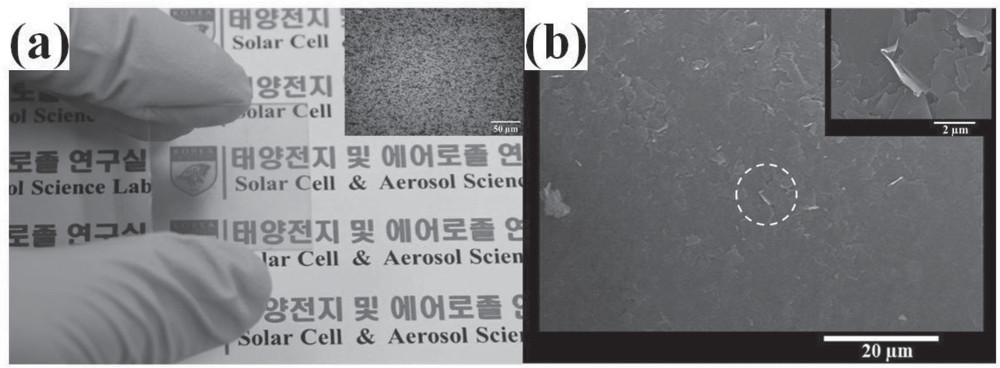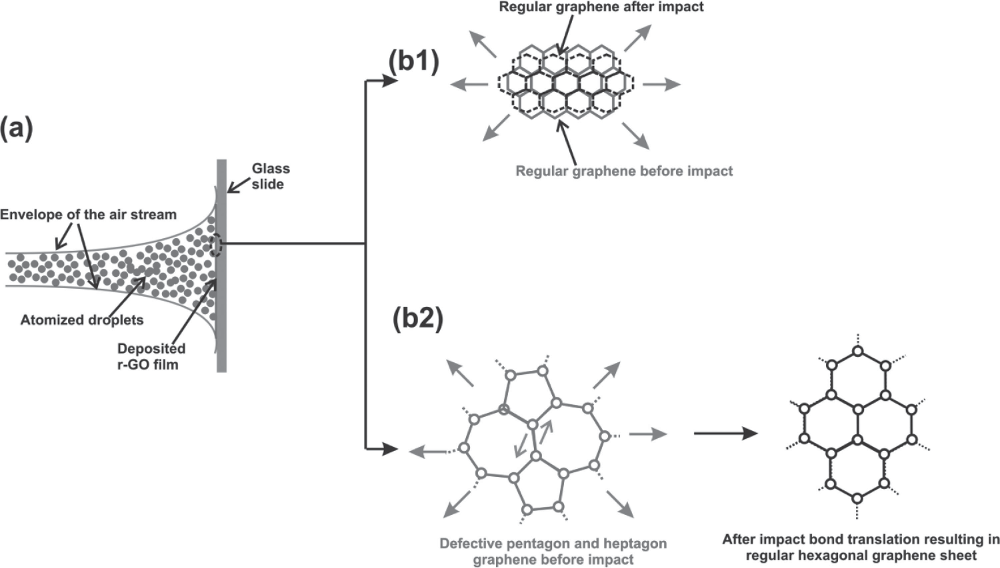Ultrasonic spraying allows to obtain high-quality graphene coating without post-processing
The unique properties of graphene - its electrical and thermal conductivity, as well as mechanical strength - make it a very promising material for the creation of various films and coatings. The two main approaches to creating such coatings that exist today are growing graphene crystals by precipitating carbon atoms from carbon-containing gases onto a substrate and applying a suspension containing graphene flakes up to several micrometers in size to the surface. The first method allows to obtain perfect single crystals, but requires high temperatures, perfectly pure ingredients, special substrates. It is applicable primarily in microelectronics, to create graphene electronic components.
The second method is much more unpretentious, but instead of single-crystal graphene, a layer is formed on the surface from a multitude of overlapping graphene flakes with a far from ideal structure — for many applications this is also enough. To improve the quality of such a coating, different methods are used - annealing, plasma or chemical treatment. Scientists from the University of Illinois in Chicago, together with colleagues from South Korea, have developed a simple and highly scalable version of the second method of obtaining graphene coating without any post-processing.

Graphene-coated glass plate and its surface under an electron microscope
Their method is that a suspension containing graphene oxide flakes is sprayed onto the product using a Laval nozzle . This type of nozzle is widely used in rocket and jet engines and allows to achieve supersonic gas flow velocities. Due to this, the suspension is sprayed into the smallest droplets, allowing to separate the individual scales and apply them very evenly. At subsonic speeds, scales often fall to the surface in the form of stuck lumps. In addition, the smallest droplets blown by supersonic gas flow almost instantly dry out.
')
Another advantage - the kinetic energy with which graphene hits the surface of the product, is sufficient for the scales not only to stick to it, but also to smooth out, “healing” many structural defects. At supersonic speeds, graphene acquires a certain elasticity, stretches, and carbon atoms in the places of defects occupy the correct position, forming an ideal hexagonal lattice.

Stretching due to supersonic kinetic energy corrects graphene defects
This method is very simple and scales well. By varying the concentration of the graphene oxide slurry, the pressure and the gas flow rate, it is easy to control the thickness and quality of the coating. The absence of the need to process the coating expands the range of materials that can be coated with graphene sputtering - polymers and plastics that can not withstand plasma post-processing or high temperatures can be widely used.
The second method is much more unpretentious, but instead of single-crystal graphene, a layer is formed on the surface from a multitude of overlapping graphene flakes with a far from ideal structure — for many applications this is also enough. To improve the quality of such a coating, different methods are used - annealing, plasma or chemical treatment. Scientists from the University of Illinois in Chicago, together with colleagues from South Korea, have developed a simple and highly scalable version of the second method of obtaining graphene coating without any post-processing.

Graphene-coated glass plate and its surface under an electron microscope
Their method is that a suspension containing graphene oxide flakes is sprayed onto the product using a Laval nozzle . This type of nozzle is widely used in rocket and jet engines and allows to achieve supersonic gas flow velocities. Due to this, the suspension is sprayed into the smallest droplets, allowing to separate the individual scales and apply them very evenly. At subsonic speeds, scales often fall to the surface in the form of stuck lumps. In addition, the smallest droplets blown by supersonic gas flow almost instantly dry out.
')
Another advantage - the kinetic energy with which graphene hits the surface of the product, is sufficient for the scales not only to stick to it, but also to smooth out, “healing” many structural defects. At supersonic speeds, graphene acquires a certain elasticity, stretches, and carbon atoms in the places of defects occupy the correct position, forming an ideal hexagonal lattice.

Stretching due to supersonic kinetic energy corrects graphene defects
This method is very simple and scales well. By varying the concentration of the graphene oxide slurry, the pressure and the gas flow rate, it is easy to control the thickness and quality of the coating. The absence of the need to process the coating expands the range of materials that can be coated with graphene sputtering - polymers and plastics that can not withstand plasma post-processing or high temperatures can be widely used.
Source: https://habr.com/ru/post/224611/
All Articles